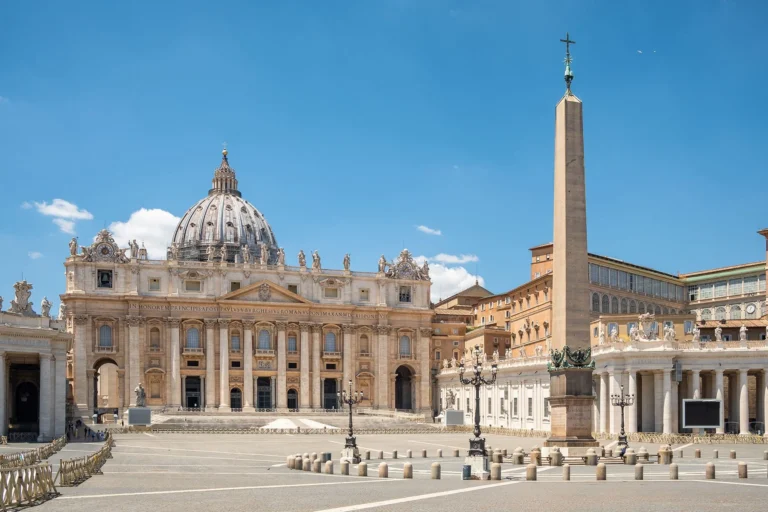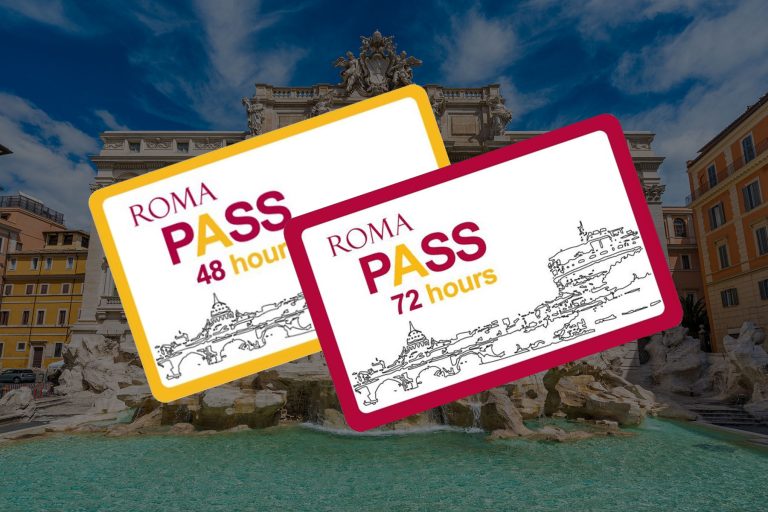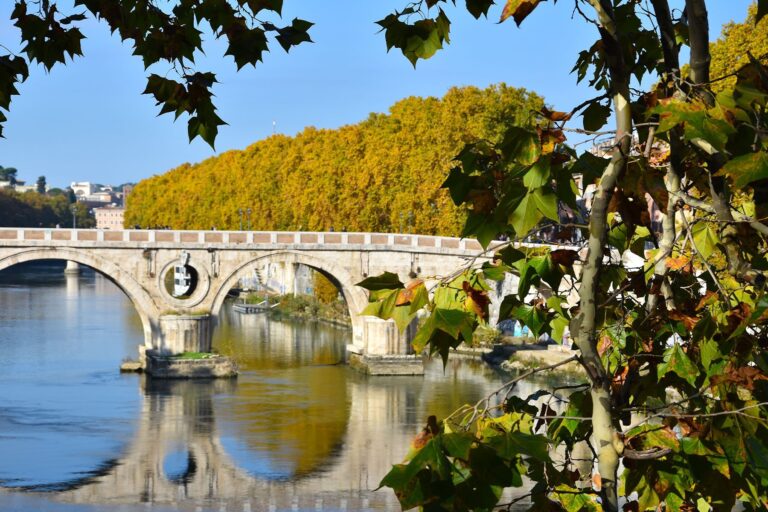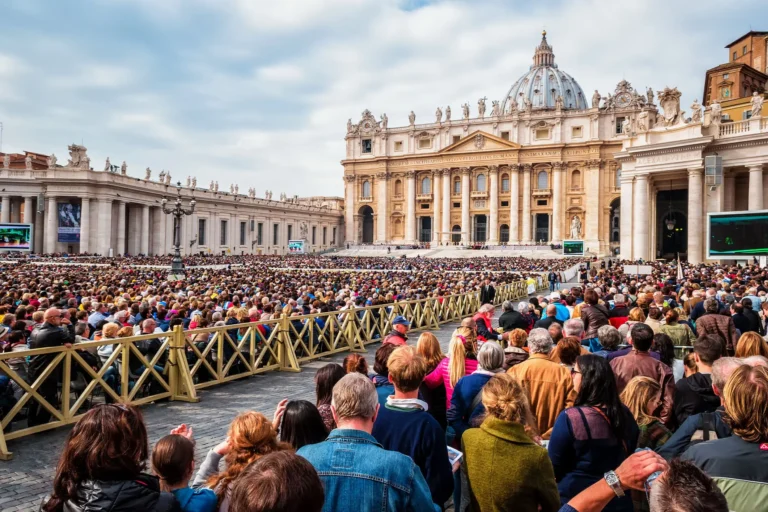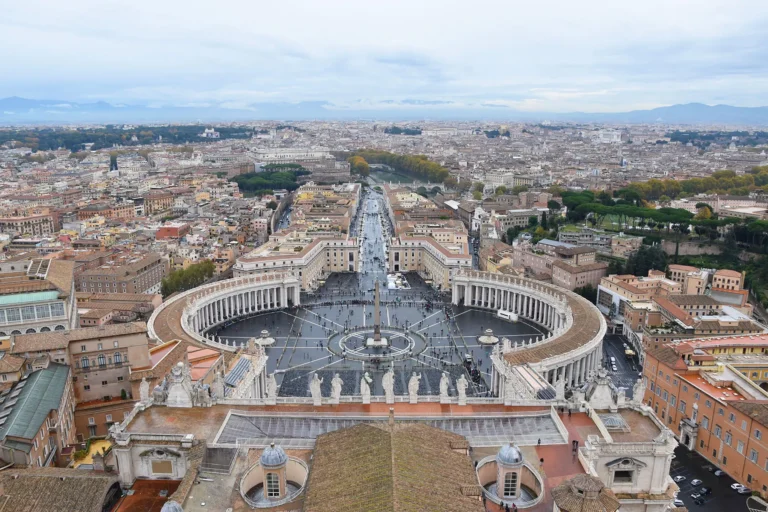At the central point of St. Peter’s Square in Vatican City stands a forty-meter-high Egyptian obelisk. This obelisk, also called a memorial needle, was placed on the square around 1586 by order of Pope Sixtus V and has a turbulent history.
There are several Egyptian obelisks to be seen in Rome, but the one in St. Peter’s Square is the only ancient obelisk in the city that has remained standing since antiquity. The column in St. Peter’s Square originally stood in Heliopolis in Egypt, where it was built as a tribute to the sun by an unknown pharaoh. In 30 BC, the obelisk was moved by the Roman prefect Gaius Cornelius Gallus to the Forum of Julius in Alexandria, which was specially built in honor of Emperor Augustus.
In 37 AD, Emperor Caligula had the obelisk moved to Rome. For this purpose, a special ship was built so that the memorial needle could be transported to Rome in its entirety. It seems that the obelisk in St. Peter’s Square is the only obelisk in all of Rome that was transported to the Italian capital in one piece. It probably wasn’t easy to bring the 372-ton obelisk over the sea to Italy, but it eventually succeeded.
Circus van Nero
Once the column had arrived on the Italian mainland, it was placed in the Circus of Caligula, later known as the Circus of Nero, in Rome. The ancient stadium for chariot racing was also known as the Circus of Caligula, after the emperor who had it built, and Circus Caticanus because it was built on Vatican Hill. Where the present-day St. Peter’s Square and St. Peter’s Basilica stand, there used to be a section of Nero’s circus. This stadium in the center of Rome had a length of over 560 meters and a width of 80 meters.
Emperor Caligula dedicated the obelisk to his predecessors Augustus and Tiberius. Caligula had inscriptions honoring Augustus and Tiberius engraved on two sides of the obelisk. These inscriptions are still visible today.
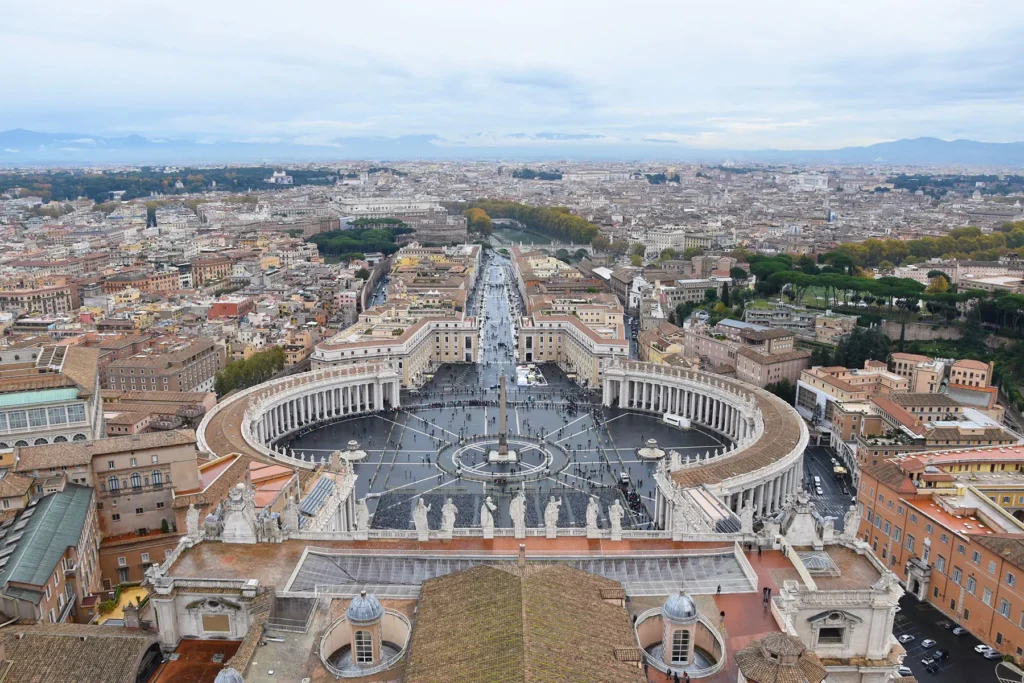
Relocation to St. Peter’s Square
In 315 AD, Emperor Constantine began the construction of the first St. Peter’s Basilica over the tomb of Peter, right next to where the obelisk was placed by Emperor Caligula. The obelisk remained there until the 16th century. In 1586, Pope Sixtus V had the obelisk moved from the Circus of Nero to the newly constructed St. Peter’s Square, which at the time did not yet have Bernini’s colonnade. In total, the obelisk had to traverse 300 meters during this relocation. Michelangelo was hesitant about the task, but the architect Domenico Fontana dared to move the obelisk.
First, a sturdy foundation was laid in the middle of St. Peter’s Square on which the obelisk could stand for centuries. This process took over a month. Then, on April 30, 1586, the actual work of the relocation began. Over 900 people, 75 horses, and 40 winches were used to move the 372-ton obelisk 300 meters using wooden rollers to its new location on the square. The relocation project lasted a total of 5 months, and in September 1586, the obelisk finally stood at its new location in the middle of St. Peter’s Square.
The Ashes of Julius Caesar
Originally, a copper sphere stood on the obelisk, which according to medieval legend contained the ashes of Julius Caesar. During the relocation of the obelisk to St. Peter’s Square, the sphere was replaced by a cross. Today, the sphere is exhibited in the Capitoline Museums (Musei Capitolini).
The Egyptian obelisk appears to be supported by four bronze lions, which, along with the star and three hills in the decoration, are symbols of the coat of arms of Sixtus V. In 1743, on the orders of Pope Innocent XIII, eagles were placed at the base of the obelisk. Since 1817, the obelisk in the square has also served as a sundial. For this purpose, a granite band has been installed north of the obelisk in the square. During noon, the shadow falls over it. Also, there are marble stones around the obelisk in the floor indicating the directions of the wind.
The fountains on the side of the obelisk
On the left and right of the obelisk, there are two seventeenth-century fountains. The remarkable aspect of these fountains is that they appear identical in appearance but were not designed and built simultaneously.
The first fountain dates to the year 1612 and was designed by the Swiss architect Carlo Maderno. This architect is responsible for numerous buildings in Rome, including the Palazzo Barberini, the Santa Susanna church, and the Basilica di Santa Maria delle Vittoria. Because the construction of the fountain disrupted the symmetry of St. Peter’s Square, a second fountain was installed on the other side of the obelisk in 1675. This fountain was built by Bernini and is an exact replica of the first fountain.
